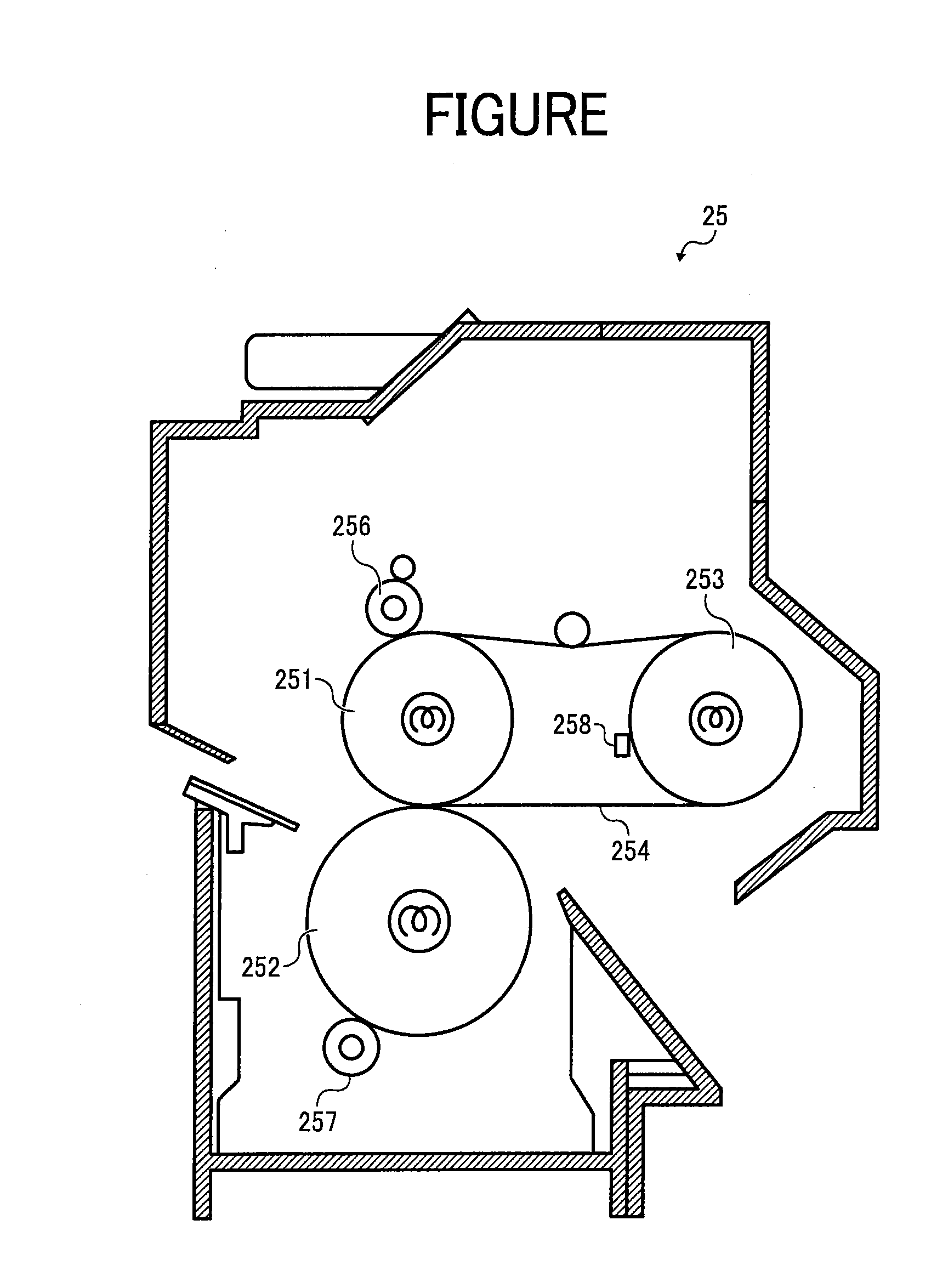Magenta toner and developer
- Summary
- Abstract
- Description
- Claims
- Application Information
AI Technical Summary
Benefits of technology
Problems solved by technology
Method used
Image
Examples
example 1
Toner Example 1
(Preparation of Pigment Dispersion)
[0293]A vessel equipped with a stirrer is charged with 250 parts of the unmodified polyester resin A and 1,625 parts of ethyl acetate. The mixture is agitated so that the unmodified polyester resin A is dissolved in the ethyl acetate.
[0294]Next, 250 parts of the quinacridone pigment A are added to the vessel and the mixture is agitated for 1 hour.
[0295]The resulting pigment mixture is subjected to a dispersion treatment using a bead mill (ULTRAVISCOMILL (trademark) from Aimex Co., Ltd.) under the following conditions.[0296]Liquid feeding speed: 1 kg / hour[0297]Peripheral speed of disc: 8 m / sec[0298]Dispersion media: zirconia beads with a diameter of 0.3 mm[0299]Filling factor of beads: 80% by volume[0300]Repeat number of dispersing operation: 5 times (5 passes)
Thus, a pigment dispersion A is prepared.
(Preparation of Wax Dispersion)
[0301]A reaction vessel equipped with a stirrer and a thermometer is charged with 378 parts of the unmodi...
examples 2-6
Toner Examples 2-6
[0324]The procedure for preparing the toner in Example 1 is repeated except for replacing the quinacridone pigment A with pigments described in Table 1. Thus, toners 2 to 6 are prepared.
Comparative Toner Examples 1-5
[0325]The procedure for preparing the toner in Example 1 is repeated except for replacing the quinacridone pigment A with pigments described in Table 1. Thus, comparative toners 7 to 11 are prepared.
TABLE 1Pigment Mixing Ratio (parts)QuinacridoneNaphtholTonerFormulaPigmentPigmentPigmentNo.(1)Red 122Violet 19TotalRed 269Example 11500595Example 2235003565Example 331.2530.75595Example 44311595Example 558.751016.253565Example 66214103565Comparative70.5000.599.5Example 1Comparative855005545Example 2Comparative9010001000Example 3Comparative100000100Example 4Comparative1102002080Example 5
Evaluations
[0326]Each of the toners prepared above is set in a tandem image forming apparatus (IMAGIO NEO 450 from Ricoh Co., Ltd.). FIGURE is a schematic view illustrating a...
PUM
| Property | Measurement | Unit |
|---|---|---|
| Fraction | aaaaa | aaaaa |
| Fraction | aaaaa | aaaaa |
| Percent by mass | aaaaa | aaaaa |
Abstract
Description
Claims
Application Information
 Login to View More
Login to View More - R&D
- Intellectual Property
- Life Sciences
- Materials
- Tech Scout
- Unparalleled Data Quality
- Higher Quality Content
- 60% Fewer Hallucinations
Browse by: Latest US Patents, China's latest patents, Technical Efficacy Thesaurus, Application Domain, Technology Topic, Popular Technical Reports.
© 2025 PatSnap. All rights reserved.Legal|Privacy policy|Modern Slavery Act Transparency Statement|Sitemap|About US| Contact US: help@patsnap.com



